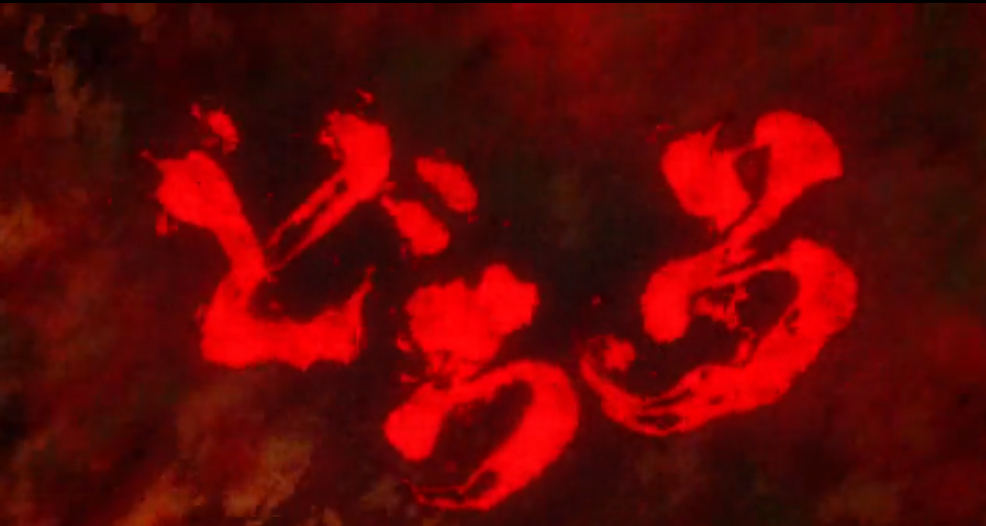Anime Review: Dororo (2019)
Lord Daigo has a problem. The lands under his control suffer from floods when it rains and droughts when it doesn’t, the crops wither, the people are afflicted with disease, and bandits and enemy soldiers roam freely. As a result, Daigo’s province is poverty-stricken and low-status. In desperation, Daigo turns to the demons enshrined in the Hall of Hell where statues of them are propitiated. He offers them anything they wish in exchange for making his land safe and prosperous.
The demons signal their agreement with the contract immediately after the birth of Daigo’s first son, stealing parts of the newborn’s body, making it limbless, skinless and eyeless. Only what appears to be a miracle of Kwannon, goddess of mercy, intervenes. One of the demons destroys the head of a Kwannon figurine in the birthing room, rather than the child’s head. The obviously dying child is given to the midwife to dispose of.

Some years later, child thief Dororo has been caught by some of his victims, and is being given a thrashing when a monster shows up. Then a mysterious young man with swords concealed in his artificial arms and a face like a doll’s appears and slays the monster, saving Dororo’s life as a byproduct. Knowing a good thing when he sees it, Dororo attaches himself to the stranger.
Eventually we learn that the stranger, Hyakkimaru, is the firstborn child of Daigo, who was set adrift rather than drowned, and taken in by a kindly craftsman who made him prosthetic parts for the bits he’s missing. By accident, Hyakkimaru learned that certain monsters return his missing parts when slain, and is wandering to reclaim his human self.
Back in Lord Daigo’s lands, he and Lady Nui have had a new son, Tahoumaru, and their country is an oasis of peace and prosperity in these war-torn times. But recently, the statues in the Hall of Hell have started breaking one by one, and with each statue’s destruction, a little of their protection fades from the land.
This animated series is the latest adaptation of Osamu Tezuka’s 1967 manga of the same name, and in the U.S., streamed on Amazon. While the manga was innovative had good ideas, it was incoherent in places and was cancelled abruptly, leaving it with a messy ending.
Thus this adaptation feels free to make major changes, most of which work well. The first obvious change is that the number of demons involved is reduced from 48 to 12, allowing the story to be contained in a single long season. Most of the good story arcs from the manga are used, but not necessarily in the same order, and some filler has been put in for breather episodes.
By reintroducing Daigo and his country early on, and frequently cutting to them, the series gives Tahoumaru a character arc he sorely needed. Yes, the prosperity of his country is based on Hyakkimaru’s involuntary sacrifice and suffering, but each time Hyakkimaru wins, the people of Daigo’s land suffer as a result, and his total victory would mean disaster. Tahoumaru grows from a spoiled child who wants his parents’ full attention and love into a protector of his people, even at the cost of his brother’s life.
Meanwhile, Hyakkimaru’s journey offers up not just monsters, but humans as opponents as well, and with each step closer to full physical humanity, there is blood to pay, and the increasing fear that he may become mentally a demon, so fixated is the young man on reclaiming what’s his.
The reveal that Dororo is biologically female, a huge twist in the manga which drastically altered his relationship with Hyakkimaru, is done much more quietly in this series, almost as an aside, and does not alter how Hyakkimaru treats him at all. Of course, this could realistically demonstrate just how isolated from human society Hyakkimaru has been.
One change I was a bit disappointed with is that Dororo is a much nicer person from the beginning, as opposed to the bratty and greedy thief of the manga. This gives him less room to grow.
The art takes some character design elements from Tezuka, but goes for a more “realistic” depiction, making the series’ Sengoku Era setting even more bleak. As a horror anime with a samurai revenge plot, there’s a lot of gory violence and disturbing imagery in these episodes.
I found the ending satisfying. Highly recommended to fans of Japanese horror anime.
By the by, today is my birthday. If you would like to support the blog, how about buying the blogger a small present?
https://www.amazon.com/hz/wishlist/ls/3TV5UMA84N51R?type=wishlist&filter=unpurchased&sort=price-asc

